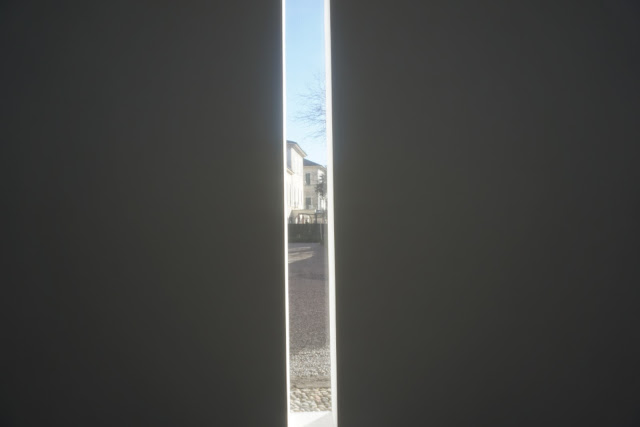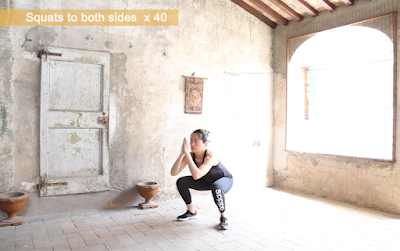What is rib valgus?Help you get in good posture with a professional perspective
I have had rib valgus since I was a child, my photo pose is not good, and my lung capacity is poor because of shallow breathing. It was only after I learned the importance of breath. After studying, I wrote this article in the hope of helping people with the same confusion to live gracefully and healthily.
1. What are ribs
The ribs are attached to the thoracic vertebrae and join the sternum in front to form the thoracic rib cage.
There are 12 pairs of ribs in the human body, which are symmetrical. The 1-7 ribs are connected with the sternum by cartilage, known as the true ribs. The 8-12 ribs are called false ribs, in which the 8-10 ribs are connected with the cartilage of the upper rib by costal cartilage, forming the costal arch, and the 11th and 12th ribs are free at the front end, also known as floating ribs.
2. What is rib valgus?
In the valgus of the ribs, we can see that the bones protrude significantly anteriorly and laterally, while the thoracic cage is elevated.
3. The disadvantage of rib valgus
- Bad posture
- Health problems
1.Breathing and mood are affected
Due to the incorrect position of the ribs, the rib opening can interfere with the normal function of the diaphragm. In most people with rib valgus, breathing is shallow and rapid, heart rate is increased, and sympathetic nerves are overactivated, making people more likely to be in a state of anxiety and tension, as well as affecting sleep, appetite and digestion.
2. Lower back pain
Rib valgus is closely related to pelvic forward tilt, and lower back tightness and shortening can increase pressure on the lumbar spine, increasing the risk of lower back pain.
3. Shoulder and neck discomfort
The rib cage is crucial for the stability of the neck and head. When the thoracic vertebrae tilt backward and the chest is lifted and expanded, the cervical vertebrae tilt forward and the head moves forward. In order to keep the head in place, the upper back muscles will be in a state of centrifugal contraction for a long time, resulting in chronic fatigue and discomfort.
4. the cause of rib eversion?
A variety of factors can cause rib valgus, the most common being abnormal posture, abnormal breathing patterns, and poor mobility of the shoulder strap.
1. Abnormal posture
When we look at most people with valgus from the side, we see two distinct features.
- The lower back is shortened and depressed
- Abdomen elongated and lordoconvex
We call this posture the scissor position.
The rib cage and pelvis are like an open pair of scissors. In normal conditions, the rib cage is located above the pelvis, and the diaphragm and pelvic floor muscles are in good alignment. In the scissor position, the diaphragm and pelvic floor muscles are facing forward. Each breath further elongates the abdominal muscles, as the pelvic floor muscles become relaxed because they are unable to participate in the breathing. In the scissor position, the pelvis is tilted forward, the weight of the body is shifted forward, and the thoracic vertebrae as a whole is tilted backward for balance, which results in thoracic uplift and valgus.2. Abnormal breathing pattern
During normal breathing patterns, different parts of the ribs move in different ways.
When inspiratory, the lower rib expands transversely, the transverse diameter expands; The middle rib is expanded horizontally, both anteriorly and laterally; The upper ribs expand mainly in the direction of anterior and posterior diameter. The distance between the ribs is always the same. When exhaling, the movement in the opposite direction returns to the starting state.
But in the abnormal breathing pattern, when inhaling, the chest is lifted up as a whole, the distance between the ribs is shortened, and the anterior side of the chest is shortened as a whole. When you exhale, the ribs can't go back into place. Looks like he's stuck in the inhale position, unable to breathe fully.
In this case, the depth of breathing becomes shallower and the speed becomes faster. The auxiliary respiratory muscles are excessively activated and participate in the lifting of the chest. In order to expand the chest during inspiration, the diaphragm needs to exert force, which also increases the chronic tightness of the diaphragm and makes it impossible to relax during exhalation.
Chronic muscle tightness and abnormal breathing patterns create a vicious cycle that keeps the ribs in an everted position.
3, shoulder strap activity is not good
In some people, when standing naturally, the rib valgus is not obvious, but if the hands are lifted straight up to the top of the head, the ribs immediately appear valgus. This phenomenon is due to the lack of range of motion of the shoulder girdle, so it is compensated by the overall lifting of the thoracic cage.
4, other
There are specific events that can cause rib valgus, such as pregnancy.
The increased demand for oxygen and greater range of breathing during pregnancy require greater space through the lifting and expansion of the thoracic cage. In addition, as the baby grows and the uterus rises, this forces the diaphragm upward, which pushes the rib cage forward and sideways to open, which further causes costal opening. This is more pronounced in the later stages of pregnancy.
After delivery, the uterus gradually returns to its original size and position, but the position of the ribs does not automatically return.
5, the misunderstanding of rib valgus
1. Can strengthening abdominal muscles improve rib valgus?
In many fitness we media articles, it has been mentioned to improve rib valgus by strengthening abdominal muscles. The idea is intuitive, because during rib valgus, the abs are elongated, so strengthening the abs and shortening them will pull the ribs down.
In my opinion, this approach is a bit naive. There is no single muscle or group of muscles that cause rib valgus, and in most people with rib valgus, the abdominal muscles are in a state of centrifugal contraction, they're very tight. While strengthening the abs pulls the ribs down, it also makes it more difficult for the abdominal wall to expand during inspiration, resulting in abnormal breathing patterns.
In the same way, it is wrong to pull your stomach in as you exhale.
2. Is it effective to stretch the chest muscle?
The pectoralis muscles, especially the pectoralis minor muscles, are considered by many to be the number one killer of rib valgus. Even if it's not the primary killer, in most cases of rib valgus, the pectoralis minor muscle does tense and shorten.
Because of the abnormal breathing pattern, we need to lift the chest during inspiration. At this time, the auxiliary respiratory muscles become tense, including the pectoralis minor, trapezius, sternocleidomastoid, and various serratus muscles.
Stretching your pectoralis minor is good for posture and breathing, but the problem is that it doesn't stretch as easily. The pectoralis minor muscle connects the shoulder blade to the ribs, and has a certain range of motion from the beginning to the end, and is in a deep position. Most common stretches cannot really stretch the pectoralis minor muscle.
3. Do you need to relax your diaphragm?
It surprises me that so many people want to relax the diaphragm, the deepest muscle in the body.
As mentioned above, the diaphragm is the main inspiratory muscle, and rib valgus is associated with the inability of the diaphragm to relax sufficiently during breathing, but does this mean that the diaphragm should relax?
Many people feel that their breathing becomes deeper after they relax the diaphragm, but this does not last for long because the muscles around the abdominal wall and the auxiliary breathing muscles are still tight and need to be activated to a great extent to breathe. In this case, the diaphragm is always relaxed, always tense, and doesn't really solve the problem.
And because of the deep position of the diaphragm, it is necessary to master certain skills to relax safely, do not operate blindly.
4. Is the wall angel useful?
Wall Angel is my favorite move, however, it is often difficult for people with rib valgus to pull off a standard wall angel. And people with sternal valgus tend to have more pronounced sternal valgus when they do this, which can reinforce poor posture.
6. How to improve rib valgus to get a good posture?
The video below will explain it to you professionally, good luck!







Comments
Post a Comment
Your voice is very important to me. How can I better accompany you?